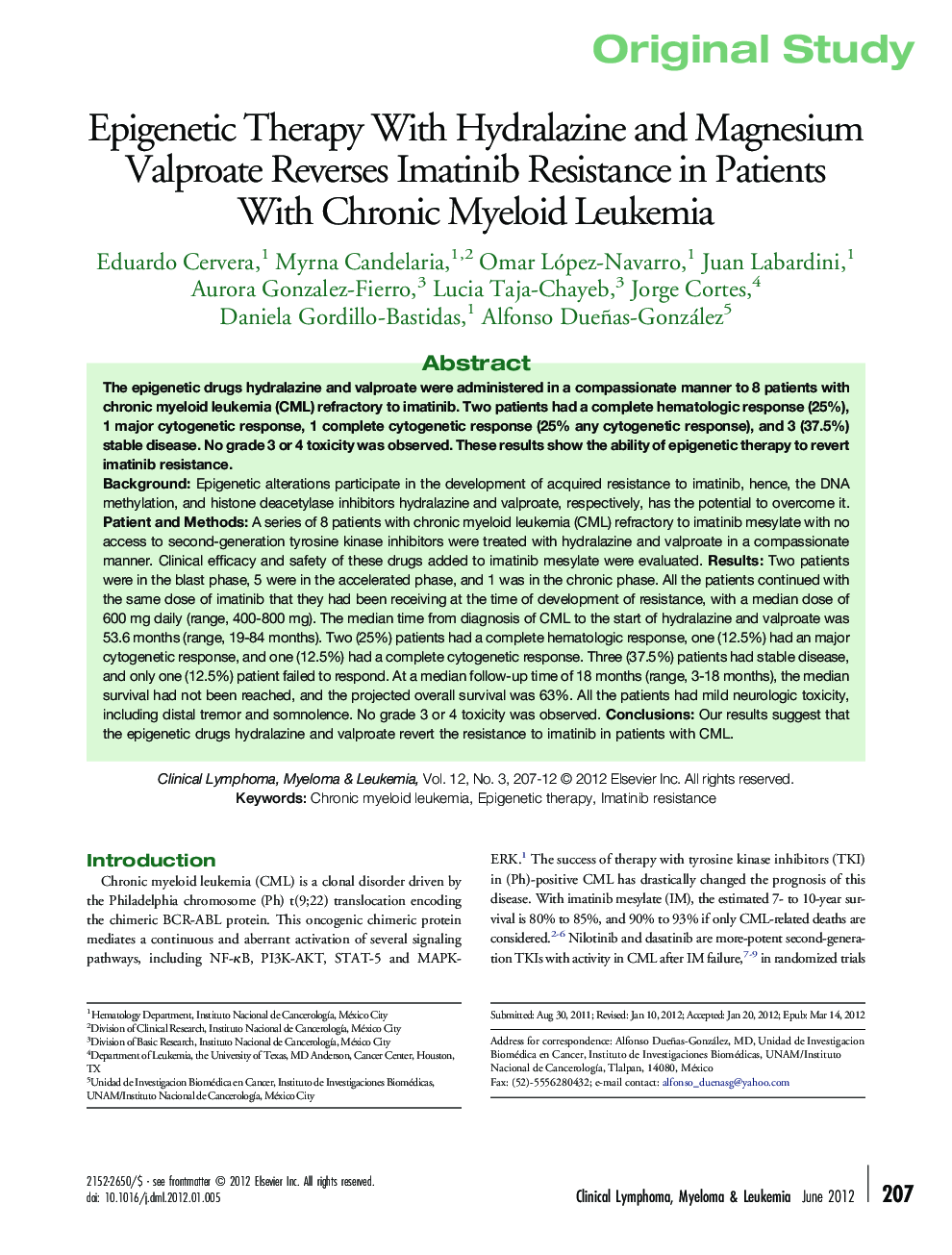| Article ID | Journal | Published Year | Pages | File Type |
|---|---|---|---|---|
| 2754971 | Clinical Lymphoma Myeloma and Leukemia | 2012 | 6 Pages |
BackgroundEpigenetic alterations participate in the development of acquired resistance to imatinib, hence, the DNA methylation, and histone deacetylase inhibitors hydralazine and valproate, respectively, has the potential to overcome it.Patient and MethodsA series of 8 patients with chronic myeloid leukemia (CML) refractory to imatinib mesylate with no access to second-generation tyrosine kinase inhibitors were treated with hydralazine and valproate in a compassionate manner. Clinical efficacy and safety of these drugs added to imatinib mesylate were evaluated.ResultsTwo patients were in the blast phase, 5 were in the accelerated phase, and 1 was in the chronic phase. All the patients continued with the same dose of imatinib that they had been receiving at the time of development of resistance, with a median dose of 600 mg daily (range, 400-800 mg). The median time from diagnosis of CML to the start of hydralazine and valproate was 53.6 months (range, 19-84 months). Two (25%) patients had a complete hematologic response, one (12.5%) had an major cytogenetic response, and one (12.5%) had a complete cytogenetic response. Three (37.5%) patients had stable disease, and only one (12.5%) patient failed to respond. At a median follow-up time of 18 months (range, 3-18 months), the median survival had not been reached, and the projected overall survival was 63%. All the patients had mild neurologic toxicity, including distal tremor and somnolence. No grade 3 or 4 toxicity was observed.ConclusionsOur results suggest that the epigenetic drugs hydralazine and valproate revert the resistance to imatinib in patients with CML.
